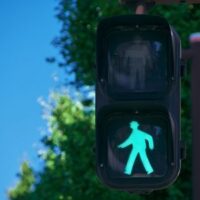What Does It Mean When Pedestrians Cross with the Light?

Pedestrians “cross with the light” when they have the right of way. Since California is a comparative fault state, pedestrians almost always have the right of way, at least to an extent. California’s comparative fault law recognizes that both pedestrians and motorists have a legal duty to avoid accidents if possible, and both parties are at least partially at fault in many accident cases.
Whether the light is red, yellow, or green, a San Marcos personal injury attorney works hard to obtain the financial compensation these families need and deserve. This hard work begins with a thorough case evaluation that identifies all your legal options. Next, our team collects evidence that supports your claims and refutes insurance company defenses. Finally, we put it all together and do not relent until we obtain maximum compensation for your serious injuries. This compensation usually includes money for economic losses, such as medical bills, and noneconomic losses, such as pain and suffering.
Red Light
Limited compensation may be available if a pedestrian crosses against the light (crosses the street on red) or jaywalks (crosses the street at a non-intersection). Everyone knows that red means stop.
However, California’s comparative fault law often comes into play in these situations. To a motorist, an illegally-crossing pedestrian is like any other everyday road hazard, such as a stopped-short car or a large pothole. Under the duty of care, motorists have a legal responsibility to avoid such hazards and thereby avoid accidents.
California has a rather unique comparative fault law. Even if a tortfeasor (negligent driver) is only 1 percent responsible for a crash, the victim is entitled to a proportionate share of compensation.
Therefore, if a police or insurance investigator said you were “at fault” for a crash, always speak to a San Marcos personal injury lawyer about your legal options. You don’t know how much money you may be entitled to unless you ask.
Yellow Light
Different rules apply to solid yellow lights, which are part of traffic control signals, and flashing yellow lights, which designate virtual crosswalks.
Liability (legal responsibility) is a toss up on a solid yellow light. The percentage of fault numbers (60-40, 80-20, etc.) usually favor pedestrians in these cases. Most SoCal streets have such wide lanes and short red lights that people with mobility impairments cannot possibly cross the street with the light, even if they start with the light.
Flashing yellow lights at virtual crosswalks, which pedestrians push buttons to activate, are essentially green lights for liability purposes. The flashing yellow lights command motorists approaching in both directions to stop and yield the right-of-way.
Pedestrian accidents are very common in virtual crosswalks. Some drivers don’t see the lights, mostly because they aren’t maintaining a proper lookout. Other drivers don’t know they’re supposed to stop, but ignorance of the law is no excuse.
Green Light
Green lights give pedestrians the exclusive right of way. However, the duty of care still applies, as outlined above.
Pedestrians who cross the street on green must still stop and look both ways before they step into traffic. Additionally, they must stay alert for hazards, such as drivers who obviously don’t intend to stop at a red light.
Contact a Savvy San Diego County Lawyer
Injury victims are entitled to substantial compensation. For a confidential consultation with an experienced personal injury lawyer in San Marcos, contact the Pursley Law Firm. We routinely handle matters throughout the Golden State.

